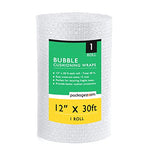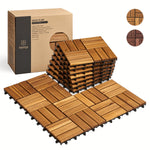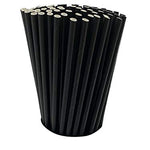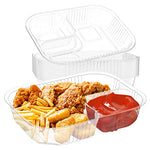You have no items in your shopping cart.
In the realm of operational efficiency and waste management, the choice of a garbage container may not seem like a game-changer at first glance. However, it's a decision that can significantly impact your operations. The garbage container used by an operation should be selected thoughtfully to ensure smooth processes, sanitation, and sustainability. In this comprehensive guide, we will explore the importance of selecting the right garbage container and why it matters for businesses and the environment.
Why Garbage Container Selection Matters
Selecting the right garbage container for your operation is more than just a routine decision. It can influence various aspects of your business, from cleanliness to cost-effectiveness. Here's why it's crucial:
Ensuring Sanitary Conditions
A garbage container that is not suitable for your operation can lead to spillage, odors, and the attraction of pests. To maintain a clean and hygienic environment, it's essential to choose a container that effectively contains waste and prevents leakage.
Enhancing Operational Efficiency
Efficiency is the cornerstone of any successful operation. A well-chosen garbage container facilitates smooth waste disposal, reducing downtime and improving overall productivity.
Promoting Sustainability
In an era of increasing environmental awareness, sustainability is paramount. The right garbage container can aid in waste separation and recycling efforts, contributing to a greener planet.
Reducing Costs
Opting for the correct garbage container can lead to cost savings in the long run. You can avoid unnecessary expenses associated with frequent container replacements, repairs, or sanitation.
Factors to Consider when Choosing a Garbage Container
To make an informed decision, consider the following factors when selecting a garbage container for your operation:
Size and Capacity
Evaluate the volume of waste your operation generates daily. Choose a container that can accommodate this volume efficiently without overflowing.
Material
Garbage containers are made from various materials, such as plastic, metal, or fiberglass. Select a material that suits your operational needs and environmental concerns.
Lid Type
Different lid types are available, from open tops to secure lids with locks. The choice depends on the nature of the waste and the necessity to keep it contained.
Mobility
Consider whether you need a stationary or mobile container. Operations with multiple waste collection points benefit from containers on wheels for easy transportation.
Environmental Impact
Opt for containers that align with sustainability goals. Some containers are designed for easy recycling or are made from recycled materials.
Garbage Container Used by an Operation Should Be: A Case Study
To illustrate the importance of this decision, let's delve into a real-life case study of a manufacturing facility that revamped its waste management strategy.
Case Study: XYZ Manufacturing
XYZ Manufacturing, a leading player in the industry, was facing recurring issues with its waste management. Overflowing containers, frequent pest infestations, and rising disposal costs were common problems.
The Solution
XYZ Manufacturing conducted a thorough review of its garbage container selection. After consulting with waste management experts, they made the following changes:
- Container Upgrade: They replaced their old, inadequate containers with larger, more robust ones, reducing overflow issues.
- Sealed Lids: Secure lids were introduced to prevent pests and odors from spreading.
- Recycling Bins: Recycling bins were added to encourage employees to separate recyclables from general waste.
The Results
The results were remarkable. XYZ Manufacturing not only achieved a cleaner and more efficient operation but also reduced waste disposal costs by 20%. By making the right choice, they demonstrated the significance of selecting the appropriate garbage container for operations.
Frequently Asked Questions (FAQs)
Q: How do I determine the right size of garbage container for my operation?
A: Calculate your daily waste volume and select a container with a capacity that can comfortably accommodate this amount.
Q: Are there eco-friendly garbage container options available?
A: Yes, many manufacturers offer containers made from recycled materials and designed for easy recycling.
Q: Can the type of lid on a garbage container impact hygiene?
A: Absolutely. A secure lid prevents pests and odors, ensuring a cleaner and more hygienic environment.
Q: What should I do with hazardous waste in my operation?
A: It's crucial to follow local regulations and dispose of hazardous waste in specialized containers designed for safe disposal.
Q: How often should I empty my garbage containers?
A: The frequency depends on your waste volume. Regularly monitor the containers, and schedule emptying as needed to avoid overflow.
Q: Are there government incentives for sustainable waste management practices?
A: Some regions offer incentives or tax breaks for businesses that adopt sustainable waste management practices. Check with your local authorities for details.
Selecting the right garbage container used by an operation should be a decision made with careful consideration. It impacts hygiene, efficiency, sustainability, and costs. By choosing wisely, businesses can optimize their operations, contribute to a cleaner environment, and ultimately, save money. Remember that the right container is more than just a receptacle; it's a key player in your operation's success.








